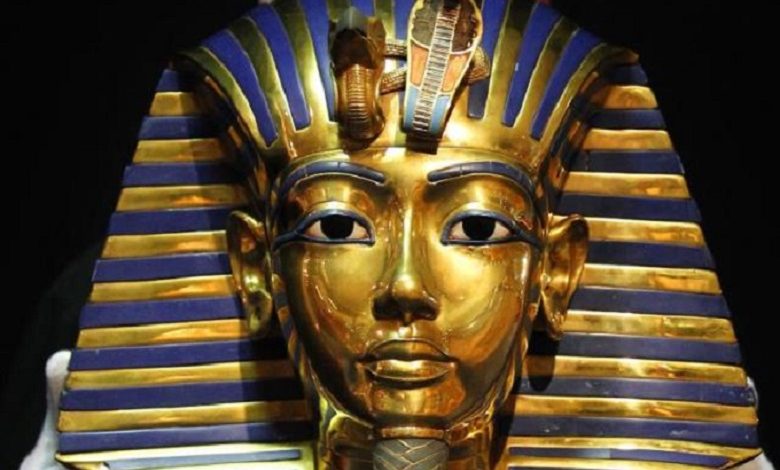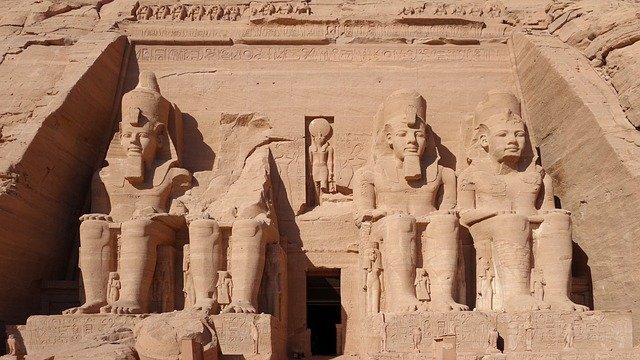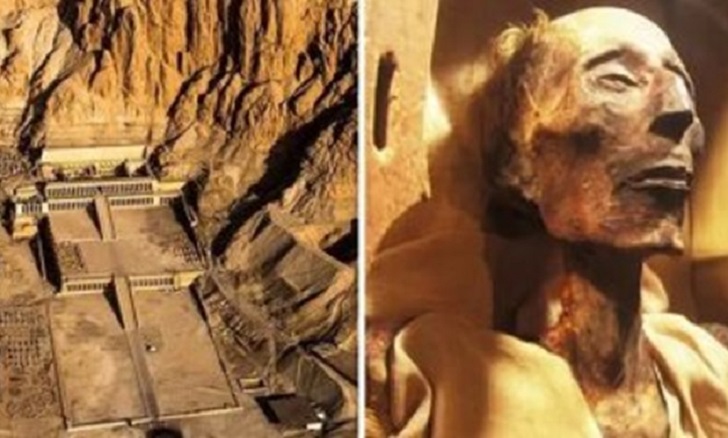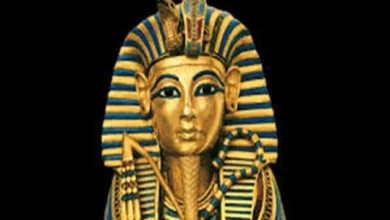When did the title “Pharaoh” actually appear?

When did the title “Pharaoh” actually appear, and how were the rulers of ancient Egypt called? Historians that are familiar with ancient Egyptian history find it bizarre.
Anyone who is even slightly familiar with the history of ancient Egypt can easily name a couple of names of the rulers of this country – the pharaohs, those who were depicted in unique clothes, for whom enormous tombs were built and in whose honor inscriptions were carved on the walls of the temples. To be a pharaoh was about the same as to be a deity – a deity who seemed to have descended to earth for a while. But what is surprising is that none of the rulers ever called himself a pharaoh; moreover, the title of the ruler of Egypt never included the word “pharaoh.”
How and why the term “pharaoh” appeared
Not without reason, modern researchers are much more willing to use the word “king” about the rulers of Ancient Egypt. In ancient times, the word “Per-Aa” referred to the “great house,” the royal palace, and only during the New Kingdom did the term come to refer to the person who owned that palace.
The king of Egypt was perceived as a mediator between gods and men. Therefore each of those who stood at the head of the state was given a long title which had to be pronounced in its entirety during solemn ceremonies, and it was forbidden to pronounce it in vain. This is how the tradition arose of calling the king a pharaoh – the ruler of the “great house” to reduce cumbersome turns of speech, on the one hand, and avoid the risk of disturbing the gods by calling their names for the second time.
For the first time, the address “pharaoh” is fixed in the document of the reign of Akhenaten, in the middle of XIV century B.C., and according to some versions – a hundred years earlier. This word since then began to mean something like “your majesty,” “his majesty,” but it was absent from the official titles of the Egyptian king.
Under which the king ruled, the title consisted of several names, each of which carried special meaning and had its roots in antiquity. The purpose of the title was not simply to reflect the status of the ruler as the bearer of sacred and secular power, but to formulate the essence, the idea, the formula of his reign.
What the title of the king of ancient Egypt consisted of
The title of Egyptian kings was established in the Middle Kingdom (the era between XXI and XVIII centuries B.C.). It lasted until the Romans’ conquest at the beginning of the new generation. The title included five “names”.
The Horus name, the oldest of the official terms that the ruler received, appeared already in the pre-dynastic or early dynastic period – the third or fourth millennium B.C. This name was supposed to represent the ruler as an earthly incarnation of the god Horus (Horus), depicted as a falcon or a man with the head of a falcon. The first Egyptian kings are known only by the choral name. An epithet about the ruler was added to the name of the god, e.g., for Pharaoh Neferhotep, it sounded like “Founder of both lands.”

The second part of the title was the “name according to Nebty,” it contained a dedication to the two mistresses, the rulers of Upper and Lower Egypt. After the union of the two lands, the rise and prosperity of the country began, and hence reference to this duality is found constantly in the symbolism of royalty. The goddess of Upper Egypt, Nekhbet, was depicted in the form of a vulture, and the goddess of Lower Egypt, Wadjet, was a cobra. The name, according to Nebty, could look like, for example, “great by royal power in Ipet-isut” – such as the name of Akhenaten. This name had been used since the First Dynasty.
The third part of the title is the Golden name. Less is known about it than about the others. It is assumed that the meaning of the use of the Golden name was to honor the sun god Ra, whose symbol was this noble metal. For the first time, such a name is recorded in the title of Djoser of the third dynasty. The main requirement in creating this part of the title was to mention gold, for example, “Your golden name.”
The fourth name was the Throne name, or “Nesu-Bity,” the one the king received at the coronation. The hieroglyphs depicted a reed and a bee, the symbol of the union of Upper and Lower Egypt. From the fifth dynasty onward, the name was not added if the king’s name contained a reference to the god Ra. The throne name was lengthened by using epithets about the king – for example, Pharaoh Amenhotep’s throne name was “Lord of truth Ra.”

A personal name, the fifth and last in the title, was given at birth. It was preceded by the hieroglyph “son of Ra,” which was an image of a duck (a homonym for the word “son”) and a circle – the Sun.
The title as a program manifesto and a ruling formula
Here is how the full title of Pharaoh Thutmose III sounded: “Horus, the Mighty Bull, Rising in Thebes; From both Masters, Ascending in royal ranks, Like Ra in the heavens; Golden Horus, the Strongest of the Strongest, Sacred by appearance; God of Two Lands, Unchanging, revealed as Ra; Son of Ra, Thutmose, the most beautiful.”
All five names of Pharaoh were called in their entirety on especially solemn occasions. At the same time, the pronunciation or depiction of the title conveyed the essence of the Pharaoh’s rule. It was clear what qualities he most valued in himself, what he considered his priority in politics, what he was proud of, what events he took credit for. As a rule, the title remained unchanged throughout his reign, but if the Pharaoh changed his style of rule, his official names were also changed.

Writing the king’s names greatly facilitated the work of historians and archaeologists to decipher Egyptian hieroglyphs and date monuments. Modern historians denote the rulers by a personal name, adding a serial number – I, II, III – if these names are the same for different rulers.
In the Hellenistic period from the 4th century B.C. to the 1st century A.D., the name “Pharaoh” was used for any king, not only Egyptian but also foreign. It entered the Greek language, as it is still used today as a synonym for “the Egyptian king”.




